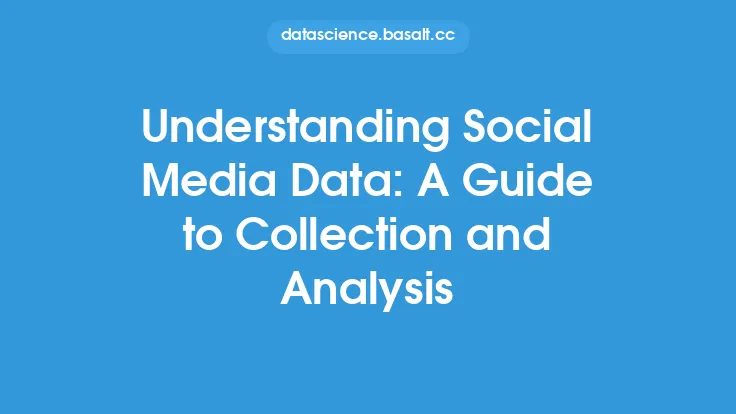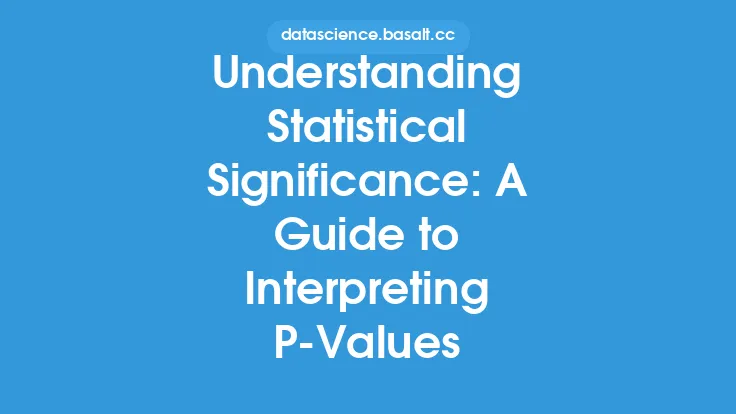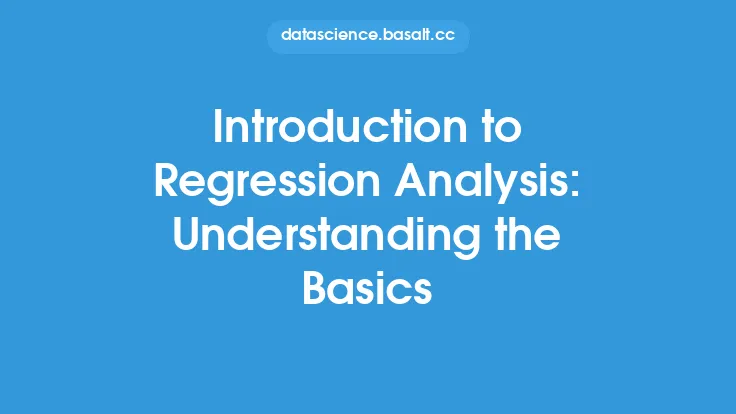Regression analysis is a fundamental concept in data analysis, allowing researchers and analysts to model the relationships between variables and make predictions based on data. At its core, regression analysis involves fitting a mathematical model to a set of data points to identify the relationships between a dependent variable (also known as the outcome variable) and one or more independent variables (also known as predictor variables). In this article, we will delve into the world of regression analysis, focusing on interpreting coefficients and results, to provide a comprehensive understanding of this powerful statistical tool.
Introduction to Regression Analysis
Regression analysis is a statistical method used to establish a relationship between two or more variables. The goal of regression analysis is to create a mathematical model that can predict the value of a dependent variable based on the values of one or more independent variables. There are several types of regression analysis, including simple linear regression, multiple linear regression, logistic regression, and polynomial regression, each with its own strengths and limitations. Simple linear regression involves one independent variable, while multiple linear regression involves two or more independent variables. Logistic regression is used for binary dependent variables, and polynomial regression is used for non-linear relationships.
Interpreting Coefficients in Regression Analysis
In regression analysis, coefficients represent the change in the dependent variable for a one-unit change in the independent variable, while holding all other independent variables constant. The coefficients can be positive or negative, indicating the direction of the relationship between the variables. A positive coefficient indicates a positive relationship, where an increase in the independent variable leads to an increase in the dependent variable. A negative coefficient indicates a negative relationship, where an increase in the independent variable leads to a decrease in the dependent variable. The magnitude of the coefficient represents the strength of the relationship. For example, in a simple linear regression model, a coefficient of 2.5 indicates that for every one-unit increase in the independent variable, the dependent variable increases by 2.5 units.
Types of Coefficients in Regression Analysis
There are several types of coefficients in regression analysis, including unstandardized coefficients, standardized coefficients, and semi-partial coefficients. Unstandardized coefficients are the raw coefficients that represent the change in the dependent variable for a one-unit change in the independent variable. Standardized coefficients, also known as beta coefficients, represent the change in the dependent variable for a one-standard-deviation change in the independent variable. Semi-partial coefficients, also known as part coefficients, represent the change in the dependent variable for a one-unit change in the independent variable, while controlling for the effects of all other independent variables.
Interpreting Results in Regression Analysis
Interpreting results in regression analysis involves evaluating the coefficients, R-squared value, F-statistic, and p-values. The R-squared value represents the proportion of variance in the dependent variable that is explained by the independent variables. The F-statistic represents the overall significance of the regression model, and the p-value represents the probability of observing the results by chance. A low p-value (typically less than 0.05) indicates that the results are statistically significant, and the regression model is a good fit to the data. The coefficients can be interpreted in the context of the research question, and the results can be used to make predictions or identify relationships between variables.
Assumptions of Regression Analysis
Regression analysis assumes that the data meets certain criteria, including linearity, independence, homoscedasticity, normality, and no multicollinearity. Linearity assumes that the relationship between the variables is linear. Independence assumes that the observations are independent of each other. Homoscedasticity assumes that the variance of the residuals is constant across all levels of the independent variables. Normality assumes that the residuals are normally distributed. No multicollinearity assumes that the independent variables are not highly correlated with each other. If these assumptions are not met, the results of the regression analysis may be biased or inaccurate.
Common Applications of Regression Analysis
Regression analysis has numerous applications in various fields, including business, economics, medicine, and social sciences. In business, regression analysis can be used to predict sales based on advertising expenditure, or to identify the factors that affect customer satisfaction. In economics, regression analysis can be used to model the relationship between economic variables, such as GDP and inflation. In medicine, regression analysis can be used to identify the factors that affect patient outcomes, or to predict the risk of disease based on demographic and clinical variables. In social sciences, regression analysis can be used to model the relationship between social variables, such as education and income.
Limitations and Potential Biases of Regression Analysis
Regression analysis is not without its limitations and potential biases. One of the main limitations is that it assumes a linear relationship between the variables, which may not always be the case. Additionally, regression analysis can be sensitive to outliers and non-normality of the residuals. Furthermore, regression analysis can be affected by multicollinearity, which can lead to unstable estimates of the coefficients. To address these limitations, it is essential to carefully evaluate the assumptions of regression analysis, and to use techniques such as data transformation, outlier detection, and regularization to improve the accuracy and reliability of the results.
Best Practices for Regression Analysis
To ensure accurate and reliable results, it is essential to follow best practices for regression analysis. These include carefully evaluating the research question and study design, selecting the appropriate type of regression analysis, checking the assumptions of regression analysis, and interpreting the results in the context of the research question. Additionally, it is essential to use techniques such as cross-validation and bootstrapping to evaluate the accuracy and reliability of the results. By following these best practices, researchers and analysts can ensure that their regression analysis is accurate, reliable, and informative, and that the results can be used to make informed decisions or identify meaningful relationships between variables.





